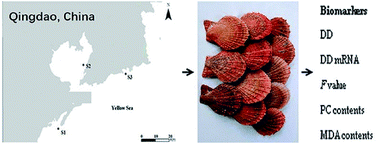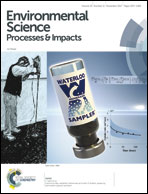Multi-biomarker approach in the scallop Chlamys farreri to assess PAHs pollution in Qingdao coastal areas of China
Abstract
A multi-biomarker approach was conducted in the scallop Chlamys farreri from three sites, denoted here as S1, S2, and S3, in Qingdao coastal areas of China in March, June, September and December 2014 to assess pollution from polycyclic aromatic hydrocarbons (PAHs) and to select appropriate biomarkers. A suite of biological responses of the gills and digestive glands of the scallops was assayed, including: (i) phase I detoxification enzymes of 7-ethoxyresorufin-O-deethylase (EROD), epoxide hydrolase (EH), and dihydrodiol dehydrogenase (DD) and phase II detoxification enzymes of glutathione-S-transferase (GST) and sulfotransferase (SULT); (ii) antioxidant enzymes: catalase (CAT), superoxide dismutase (SOD), and glutathione peroxidase (GPx); (iii) oxidative damage parameters: lipid peroxidation (LPO) expressed by malondialdehyde (MDA) contents, protein carbonylation (PC) and DNA damage (F value); and (iv) the metabolism-related genes of EH, DD, GST, SULT and SOD. Simultaneously, the concentrations of total PAHs along with 16 types of PAHs previously identified by the US Environmental Protection Agency (USEPA) and environmental parameters, including temperature and salinity together with pH, were measured. Using Principle Component Analysis (PCA), it was revealed that S2 was the most PAH-contaminated site, while S1 was identified as the least PAH-polluted site, which was consistent with the results utilizing the Biomarker Response Index (BRI); in other words, the biological health status of S2 was worse than S1 and S3. Moreover, the most suitable biomarkers to assess PAH pollution in Qingdao coastal areas proved to be DD mRNA expression and the F value in both the gills and digestive glands for the total PAHs, DD activity and PC contents or PC and MDA contents in the gills or digestive glands for 5 + 6 rings PAHs and DD mRNA expression in both the gills and digestive glands for 2 + 3 rings and 4 rings PAHs. Moreover, this study highlighted the possible use of the scallop Chlamys farreri for studying contamination due to PAHs and provided valuable information on environmental assessment.



 Please wait while we load your content...
Please wait while we load your content...